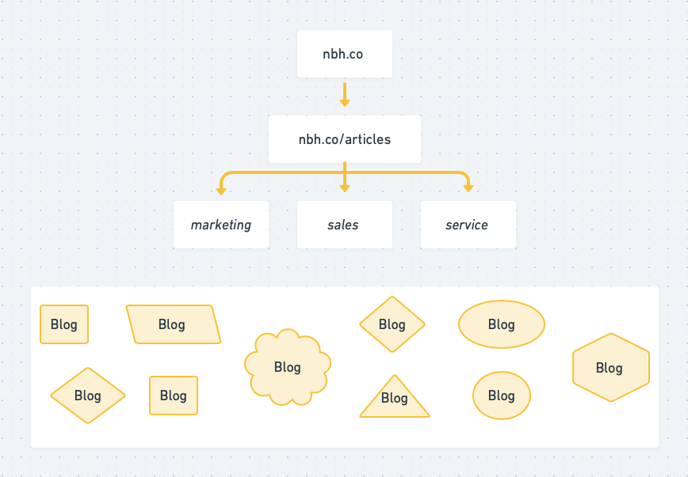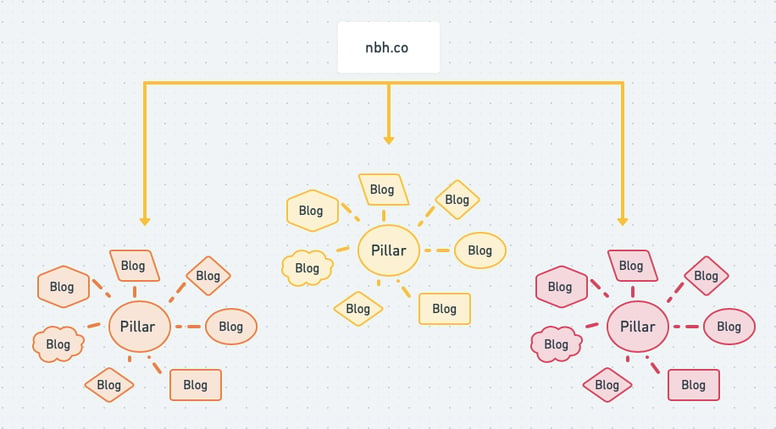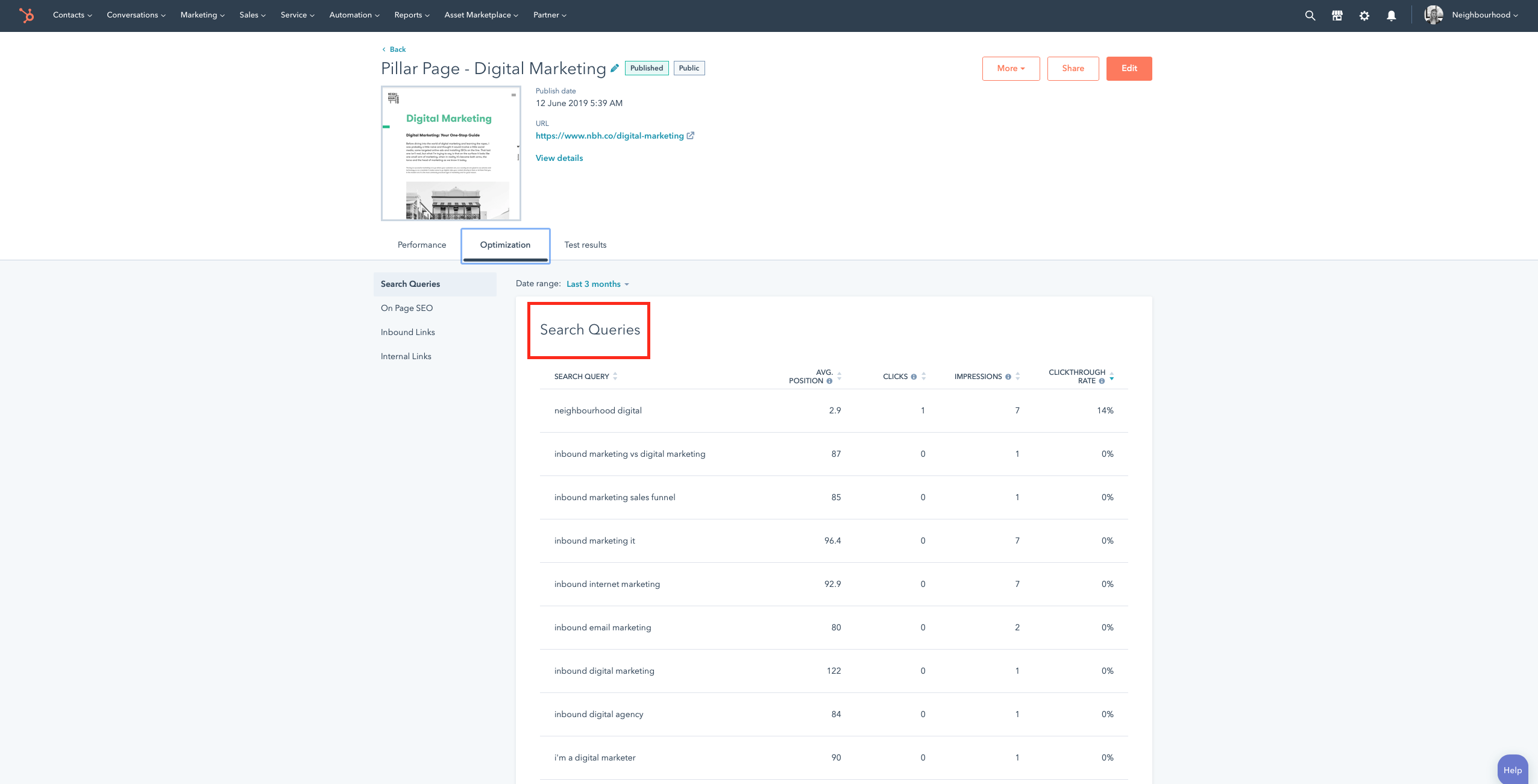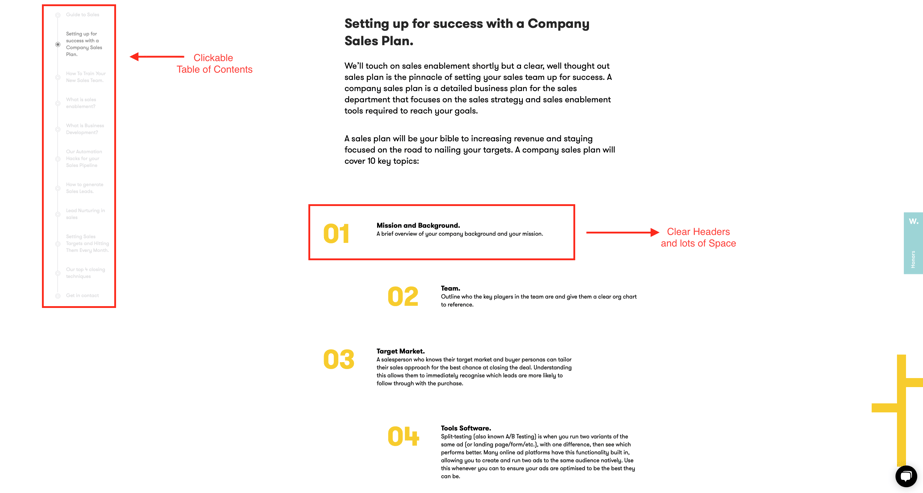To say that search engines have 'glowed up' though, is a huge understatement. While I may have grown into my nose (mostly) and cleared up my skin as I've grown up, search engines have grown to provide the best possible answers to searchers' queries, by sifting through thousands of articles, web pages and blogs in a millisecond to present you the most accurate information possible - even if it isn't exactly what you searched for. Google is now so smart that if you searched for "running shoes", you'd see results for "sneakers" too. High tech and a half!
This means that marketers need to get even better at creating and organising content that addresses any gaps that could prevent a searcher from getting the information they need from your site.
In 2017, our friends over at HubSpot did just that. They masterminded a new wave search engine optimisation tactic to keep up with Google's ever-changing algorithm. Believe me, this is a wave we should all be riding. They recognised that sites need to be organised according to different main topics, with blog posts about specific, conversational long-tail keywords hyperlinked to one another, to address as many searches as possible about a particular subject - therefore birthing... the topic cluster model.
So in this article, I'm going to walk you through this new age tactic and just how pillar pages fit into the mix.
What are Topic Clusters?
Up until very recently, blogs were structured as individual content pieces optimised to rank for specific keywords. The result of doing this however, is a disorganised portal where it's super tricky to find the answers you're looking for. It also results in your own URL's competing against one another in search engine rankings when you produce multiple blog posts about similar topics.
Here's what our blog architecture used to look like before implementing the topic cluster model.

Now, in order to rank in search and best answer the new types of queries searchers are submitting, the solution is to use the topic cluster model. In essence, the model allows you to choose the broad topics you want to rank for, then create content based on the specific keywords related to that topic, that all link to each other, to create broader search engine authority.
Using this model, this is what our blog infrastructure looks like now, with specific topics surrounded by blog posts related to the topic, connected to other URLs in the cluster via hyperlinks. Squeaky clean, eh?

What is a Pillar Page?
Maybe you've seen them at some Ancient Greek ruins or underneath a sturdy, old Queenslander - if you think of pillars in their most literal sense, they're a series of posts that support an entire structure. This is exactly what they are in page form! A pillar page is the basis on which a topic cluster is built. It covers all aspects of the topic on a single page, with room for more detailed cluster blog posts that hyperlink back to the pillar page.
So while pillar pages broadly cover a particular topic, cluster content should address a specific keyword related to that topic in-depth. For example, say you have a website all about dogs (the dream). You might have a portal on your navigation menu titled 'Dog grooming', under which the pillar page 'How to Groom your Dog' appears, linked to a bunch of cluster content like 'Top 10 best dog brushes', 'Techniques for the perfect poodle blow-dry', 'How to make your dog get in the shower' or even 'How to make a Labrador get out of the shower', the opportunities really are endless - especially now that you've got me talking about dogs.
Having pillar pages as a major part of your blogging toolkit means making a focused effort to:
- Link your content together in helpful ways.
- Eliminate redundant content.
- Organise your blog around the most important topics.
- Establish direction for your content moving forward.
For example, here's one I prepared earlier *smug wink*. This is our pillar page on Digital marketing, loaded chock-a-block with each element of digital marketing, a quick run-through of what it is, and hyperlinked to specific pieces of cluster content - in an effort to rank us higher for topics related to digital marketing.
Why are Pillar Pages Important?
1. Website Organisation
While your 2020 'new year, new me' content calendar might have seemed very 'Marie Condo' at the time, it might come back to bite you as your content writers begin to cut corners quality-wise in the quest to push content out on time. For too long, marketers have worked under the proviso that you have to consistently produce content to build an audience. These same marketers are then left with hundreds of blogs ... and zero views per day - so when Google crawls their website, it sees a whole lotta nothing.
Auditing your blog content should be part of your quarterly routine anyway, but luckily for you, pillar pages and cluster content force you to decide what your website is really about, and to take out the trash. It also means updating or recycling posts that relate to your pillar, so all the pages without any traffic may finally get some use again.
Pillars force you to think about how your pages relate to one another, to help you streamline the paths that your audience has to follow. By creating more relevant connections between each of your pages, you'll increase the likelihood that someone will stay in your content ecosystem for a lot longer.
2. Search Engine Optimization
Just like other types of long-form content, the primary goal of pillar pages is to rank for specific keywords. Once you decide what you want your business to be known for, you can look at how your audience is learning about these topics and write super-comprehensive posts.
While longer posts don't automatically rank in Google, generally you can assume that the length of the post indicates it might be more comprehensive, and the more comprehensive you are, the more search queries your content is relevant too. So since good pillar pages are supposed to be comprehensive, good pillar pages tend to rank highly!
And because you're deleting blogs you don't need, Google only sees the good stuff - helping your site appear more relevant to your topics and more valuable to your readers!
3. Interlinking
The pillar page and topic cluster model is designed to create opportunities for interlinking - a super helpful piece of strategy for both organising your blogging portal and providing your audience a convenient way to explore a concept. As a result, these readers stay on your site for far longer and are more likely to move through your marketing funnels.
Top tip: The pages within your topic clusters will likely link with one another here and there, but all of them should link to the pillar page they were built around. This helps out Google in recognising that your pillar page is the best place to send people to learn about a particular topic.
4. Lead Generation
Pillar pages are natural beacons for lead generation - if your keyword efforts have brought traffic to your site, you have the opportunity to dangle lead magnets in front of them and get them on a mailing list.
Even if your pillar page doesn't rank, it is still one of the pages your content point to the most, so it's going to be visible to the people who hang around on your website long enough, so it's always a good place to try and generate some leads!
5. Content Marketing
But lead generation isn't all that pillar pages are useful for - they are the best way to show off and teach people everything they should know about a particular topic that's important to you or your business. A pillar page establishes wild thought leadership and serves as a portal for people to deep-dive into your content. Pillars and clusters are great tools for your onboarding campaigns, lead nurture sequencing, re-marketing efforts and pushing your audience through the buyer's funnel. They are not simply a top-of-the-funnel-ting, pillars and clusters should contribute to nearly every facet of your digital marketing.
This might sound all well and good, but how do you actually make a pillar page? Glad you asked!
How to Create a Pillar Page
1. Decide what you want to be known for
Start by drilling down to the nitty gritty - what topics do you want to help people learn about? And what topics is your organisation best equipped to teach people about? These topics may directly and indirectly relate to your offering, or even be problems or aspirations you've identified your audience possessing, or think they need to understand in order to do their job or serve their customers more effectively.
2. Check how those topics shape up with keyword research
Once you've figured out what you want to be sharing, you need to research how your audience is currently finding the answers. What do they put into Google when they're trying to learn more?
This is where you'll specifically decide what you're going to write about. Your pillar pages should focus on the search queries that directly relate to what you want to be known for - not always the keywords that have the highest traffic potential. Once you've got your pillar down-pat, you can map out any relevant topics that relate to your pillar and align with what people are searching for.
3. Focus on search intent
A lot of brands make the unfortunate mistake of picking keywords they want to rank for and then talk about themselves as much as possible in relation to that topic. That's not how SEO works and it sure as heck won't produce a very effective pillar page.
You have to focus on what people want to know when they Google those keywords. Who are they? What situations are they looking to address? What do they want from your page?
Top tip: It helps to have a look at the pages that already rank highly on the search results page for the terms you've chosen. What is your competition saying? What are they not saying? How can you fill any gaps you might be noticing?

4. Identify the questions people expect you to answer
The more your pillar page assumes people understand as well as you do, the less effective it will be. Be sure to go over all of the 'stupid questions' first up, and dedicate sections of your page to questions that take a little more time to answer.
5. Stitch old posts together ... or start from scratch
Most pillar pages don't take much original work - if you've been writing about a topic for years, you probably have more than enough posts that cover many of the things you've outlined. In this case, you can save some valuable time by merging old posts together to make a pillar page. Some of these posts may have been dead for years, because they weren't getting the traffic they deserved or doing you any good at all, or are even really great pages you refer to a lot and that generate a lot of traffic.
Whatever the case may be, just copy-and-pasting a bunch or pages together to create a pillar page is hardly the seamless and natural vibe we were going for. You'll have to do some stitching here and there, add some transitions, change a few words, update anything outdated and add some filler. The effort you put into this Frankenstein-esque venture will be well worth it in the end, with all of your juicy information squared away nicely!
But hey! Creating a pillar page doesn't always call for old posts to be fused together, you want breadth - not depth. Through your research, you may find that the content you already have doesn't really address the issues people are looking to solve, or they're too specific for a page that's meant to be super broad. Merging these posts might have the unintended effect of creating something a bit ... well, whack. Besides, if you use all of your old blogs to create a pillar page, what on earth will you have to link to? Defeats the purpose a smidge!
Starting from scratch is not only a super liberating activity, but is a great way to ensure that your pillar page delivers exactly what your audience wants and is organised in the most helpful and visually pleasing way.
6. Organise your pillar
Even if you have all of the right information, the right lingo and have gone full grammar-police on your sentence structure, your page isn't going to rank (or be particularly helpful) if that info isn't arranged in a way that is easy to digest. If you're looking for information on a particular topic you're really interested in learning more about, the last thing you want to be presented with, is a wall of tiny text that scrolls forever without a break of any kind.
Think about it literally. You've picked out a cake from that fancy bakery on the High street that everyone's banging on about, you're so keen to see what all the hype is about. You sit down, get your fork out, open wide and ... shove the entire cake in your face.
While a dramatic (and seriously hunger-inducing) example, your content digestibility works in much the same way. Readers want to take in small bites, slowly savour the information, have a break to let it sink in and work at their own pace!
So when you're creating your pillar, think about the wide range of people who may visit it, and the wide range of things they may be trying to learn about. How can your page serve all of these things at once?
First up, break up your text with headers to signal the main ideas to make reading your page super easy.
For longer pillar pages, you could even use jump links by making a simple table of contents after your introduction, so readers can navigate quickly and jump ahead if need be. (Peep the example of our Sales Pillar Page below to see this in action, or see it HERE!)
Relevant images also work to break up text and make your page less intimidating, so as you're creating your pillar, try to find sections where it would be helpful to explain concepts visually to give your readers' eyes a rest!
Going full Feng-shui on your content, means that even if your competitors have got better expertise or have covered the topic more comprehensively than you have, you'll still win because people will enjoy the experience your content provides, and will be so pleased they'll hang around for much longer!

7. Map out your topic clusters
As you're outlining and writing your pillar page, you'll probably find that there are sections you could go into more detail on, and you may even find that there are related topics people are searching for that don't quite fit into your pillar but are still worth addressing.
Good news! There's no limit to the number of posts that can be part of your topic cluster. If it's relevant to your audience and helps you establish authority on a topic you want to be the boss for, then write a post about it!
There are also no requirements for the type of posts and pages that can be a part of your cluster - the point is just that you're making an interconnected network of pages that helps people explore as much of the topic as their little heart desires!
Your topic cluster could include interviews with thought leaders in your industry, other pillar pages, blog articles, videos, FAQ pages, service pages - I mean really ... anything you think would be helpful!
8. Interlink everything
As we've established, interlinking is the secret sauce that makes a pillar page so delicious - you have to make a conscious effort to point relevant pages back to this one. Pretty much any time your site mentions a topic, it should point back to the relevant pillar - even if it's a little bit outside of that pillars' topic cluster. For example, if you're smashing out a topic cluster article on 'How to make a Labrador get out of the shower, which you're writing for the pillar of 'How to Groom your Dog'. In the article, one of the helpful hints might be to lure the dog with treats, which while not directly related to dog grooming, you could link out to your other pillar page of 'What to Feed your Dog'.
Create a digital spider web of education and loveliness and you'll reap the rewards big time!
9. Promote your new pillar page
I hate to be the one to tell you, but it can take literally years for a new page to rank on Google (more the reason to get cracking now!).
However, if all of a sudden your page starts getting a ton of visits, and people spend a really long time on your page or it even gets some external links, you can really speed up the process! Promoting your pillar page helps Google suss out whether your page is relevant to people who want to learn about your topic faster.
But promotion doesn't have to be limited to social shares or an email send. This is content that should instead be a part of your drip campaigns and on-boarding process - because it explains something relevant to your audience and your business in a simple and informative way.
Content strategies are imperative for any business with an online presence. So I think overall we can agree in saying, a big props to HubSpot, for inventing this marvellous new way of organising your blog infrastructure for SEO optimisation! Pillar pages are the inbound marketers dream come true, as they bring people to your website and encourage conversion by educating - marketing that's truly loveable!



